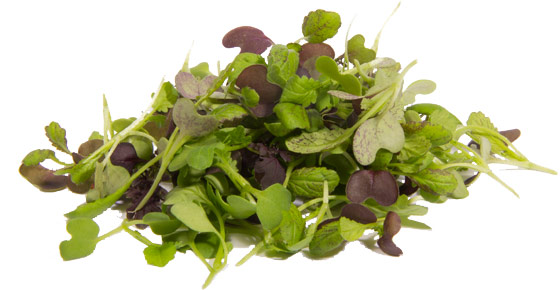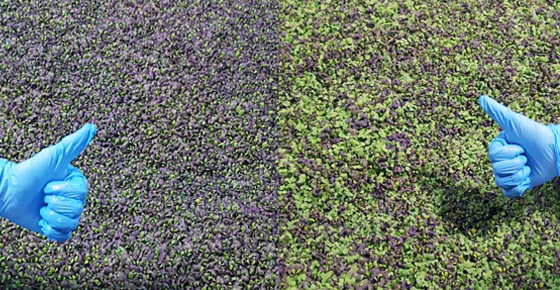
What are Microgreens?
More than a sprout and younger than baby greens, microgreens are edible plants that can play a useful role in your diet. Learn the many ways microgreens can add color, flavor, and nutrition to your kitchen table.
Why eat Microgreens?
• Grow year-round
• Vivid colors
• Tender texture
• Intense flavor
• Nutritious
• Versatile
Nutritional & health benefits
Scientific data on the nutritional content of microgreens has shown that microgreens do contain a higher concentration of many nutrients when compared with the mature, fully grown vegetables or herbs.
Several studies have demonstrated the high level of phytonutrients, antioxidants, vitamins, and minerals that microgreens contain. Microgreens are also rich in enzymes, which enable them to be more easily digested.
Due to their high antioxidant content, microgreens are considered a functional food, a food that promotes health and prevents disease.
Consuming plant-based foods of all kinds has been linked to a reduced risk of many health conditions, such as obesity, diabetes, heart disease, and high blood pressure. Plant-based foods also support a healthy complexion, increased energy, lower weight, and longer life expectancy.
Tips to incorporate more microgreens into a diet
Microgreens can boost color, enhance flavor, and add texture to any dish, while delivering a nutritional boost as well.
• Using them as a topping for salads and soups
• Tossing a small handful into a smoothie or juice before blending
• Using them as a garnish alongside any main dish
• Placing microgreens on top of a flatbread or pizza after cooking
• Adding microgreens into an omelet or frittata
• Replacing lettuce with microgreens on a burger, sandwich, or tacos


 Arugula
Arugula  Rainbow Mix
Rainbow Mix  Spicy Mustard Mix
Spicy Mustard Mix  Mizuna
Mizuna  Amaranth
Amaranth  Bulls Blood
Bulls Blood  Red Radish
Red Radish  Red Russian Kale
Red Russian Kale  Purple Kohlrabi
Purple Kohlrabi  Red Pac Choi
Red Pac Choi 
 New Jersey natives, Christopher and Joseph Chiappetta have traveled the country and many parts of the world teaching and learning about the latest
innovations in agriculture, bringing the very best together here.
What began as a microgreen grow in a basement, is now an ever expanding microgreen wholesale operation in downtown Asbury Park, NJ.
New Jersey natives, Christopher and Joseph Chiappetta have traveled the country and many parts of the world teaching and learning about the latest
innovations in agriculture, bringing the very best together here.
What began as a microgreen grow in a basement, is now an ever expanding microgreen wholesale operation in downtown Asbury Park, NJ.